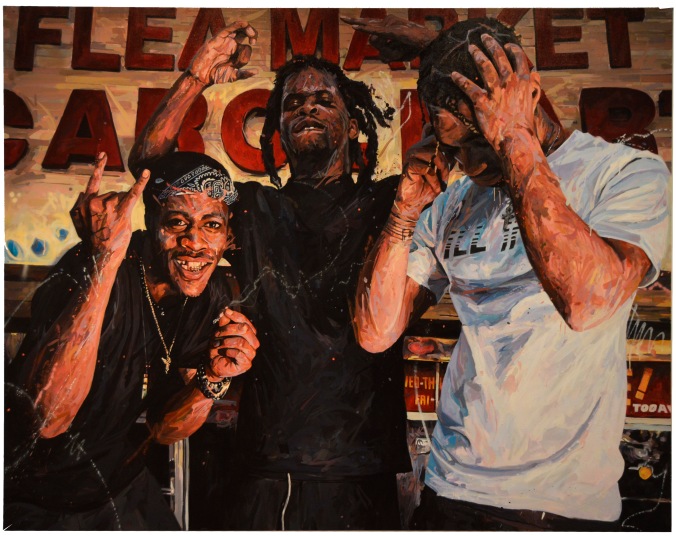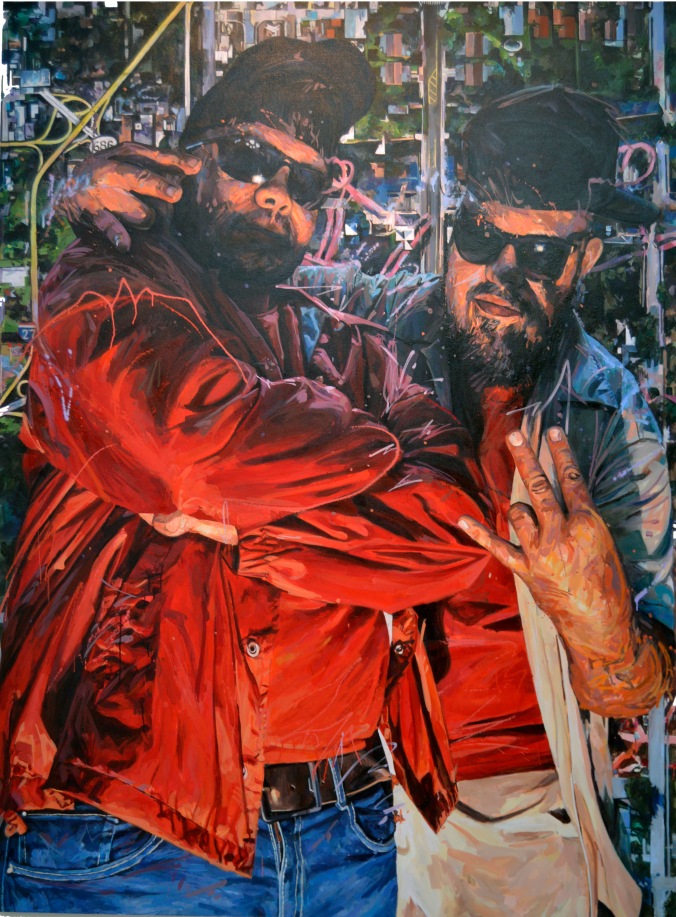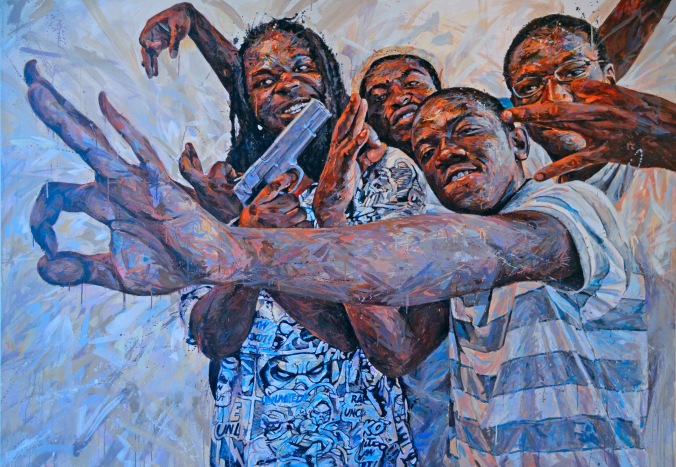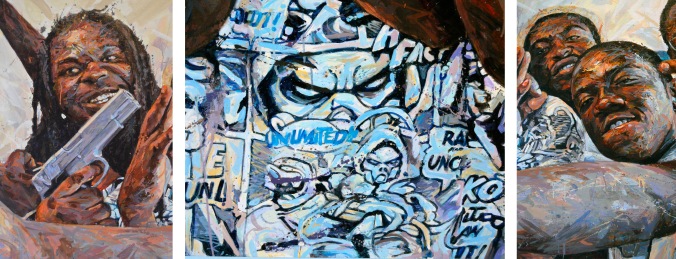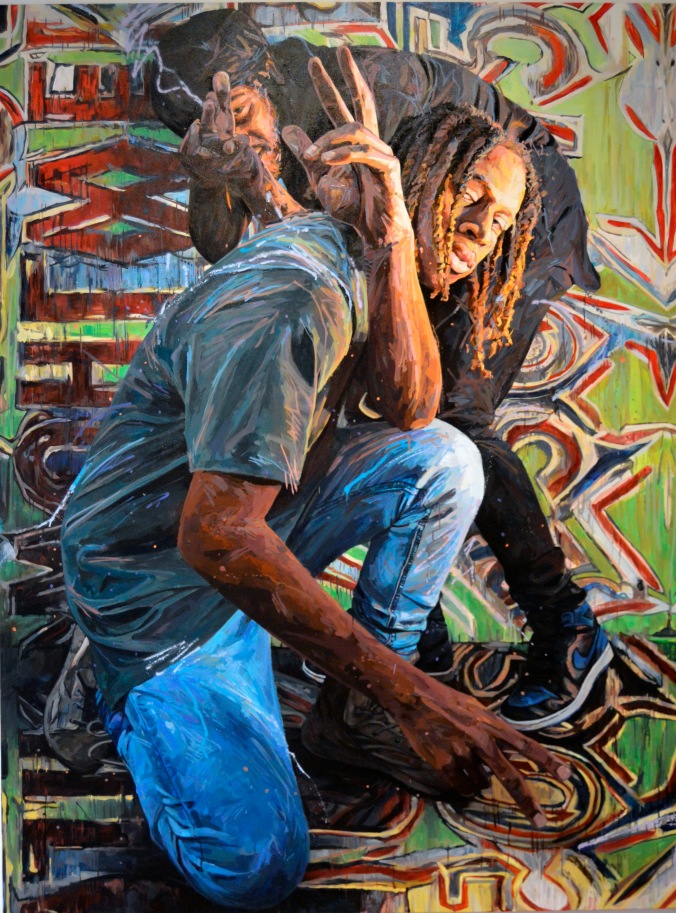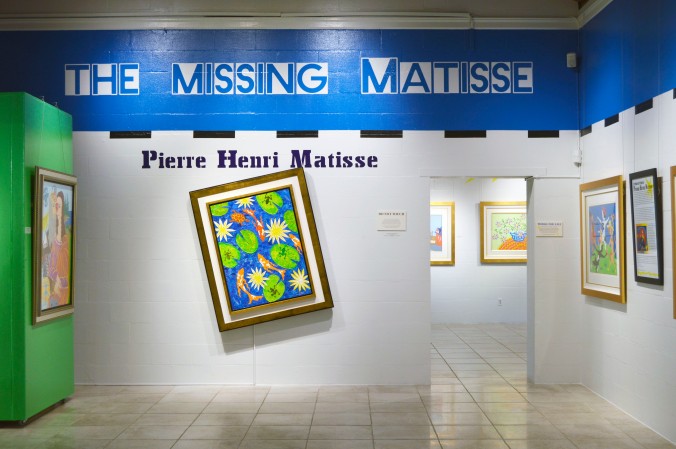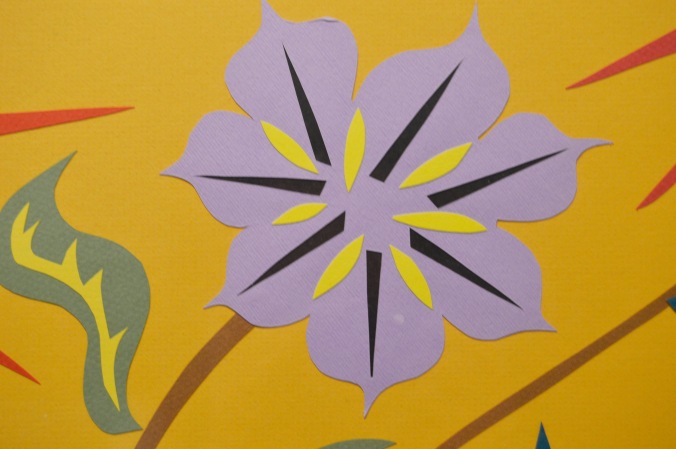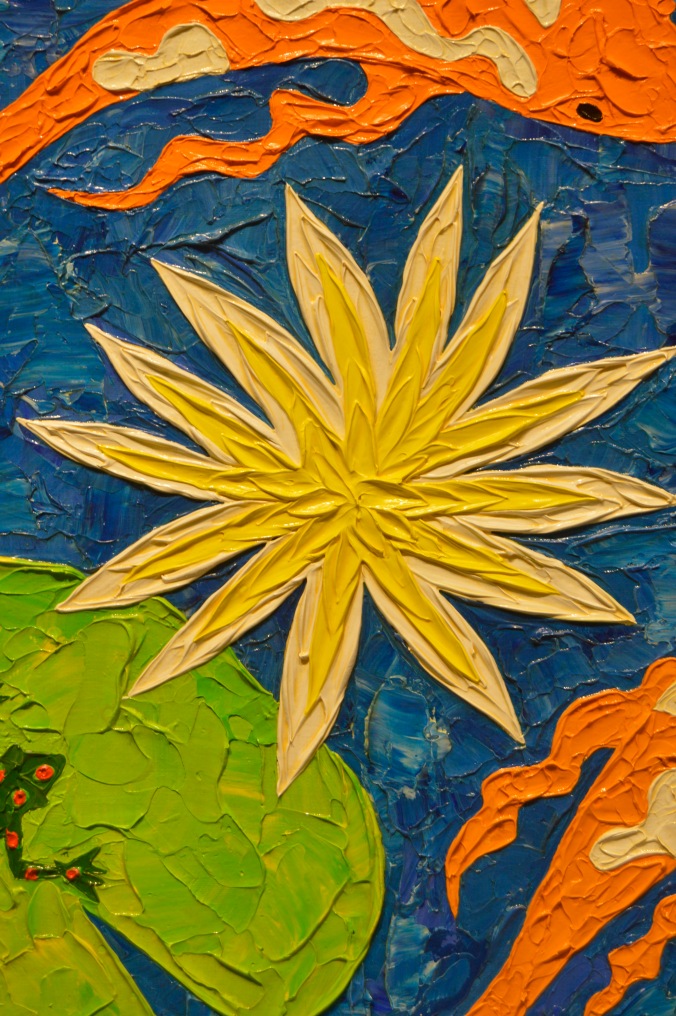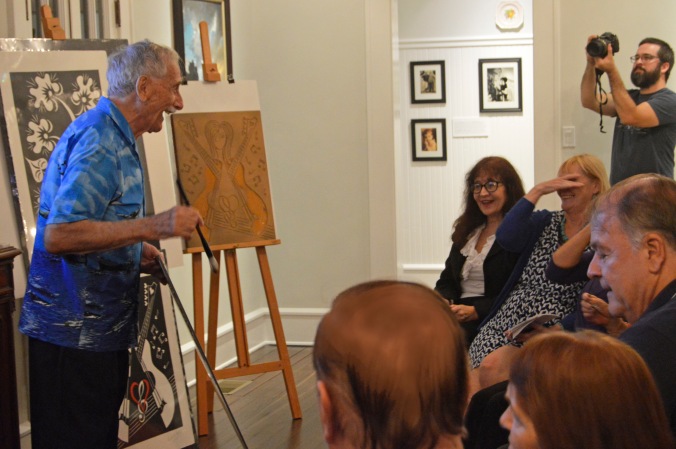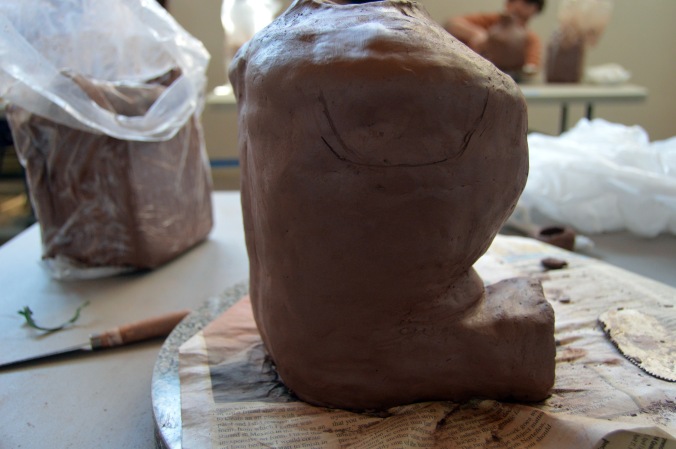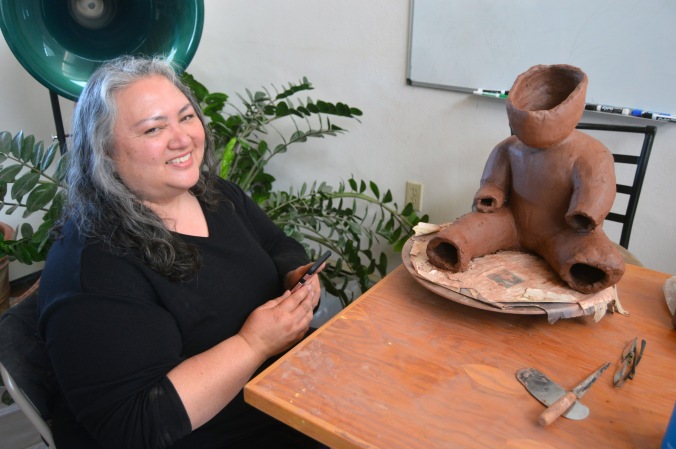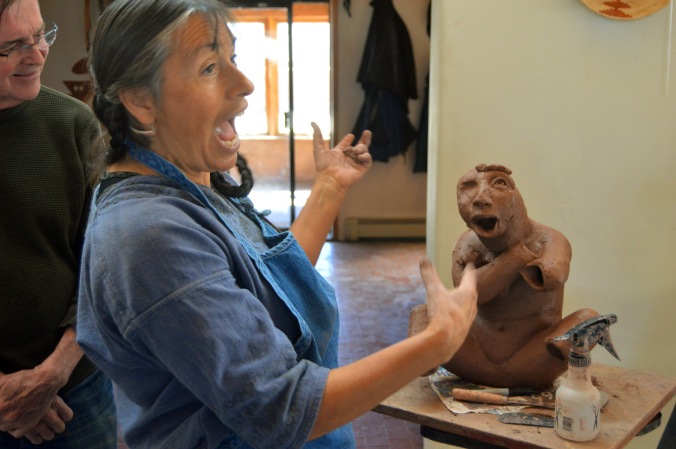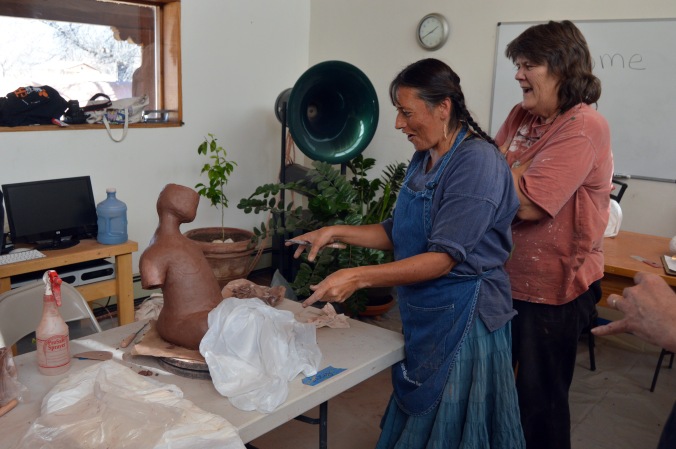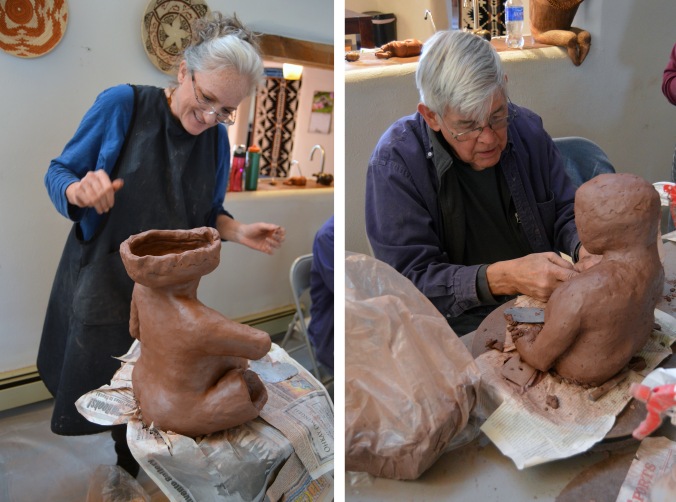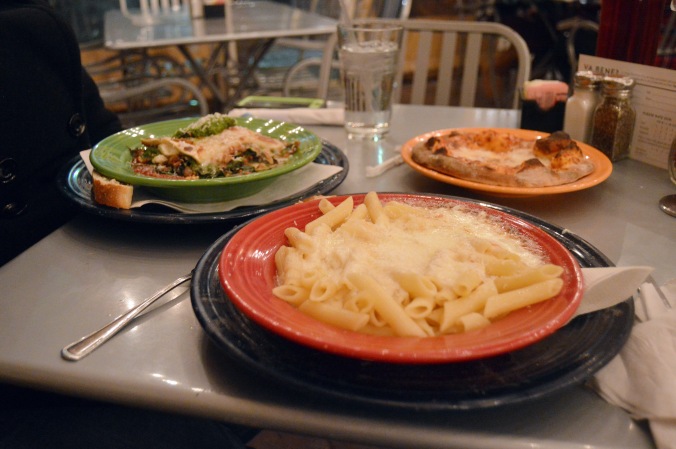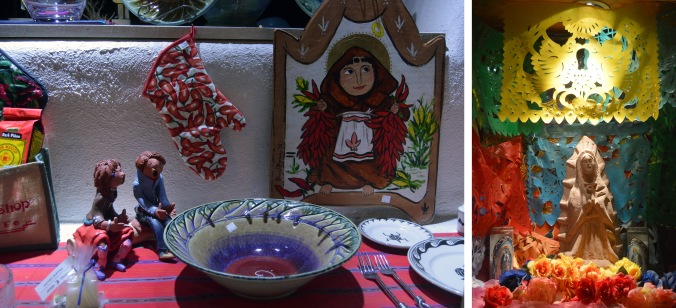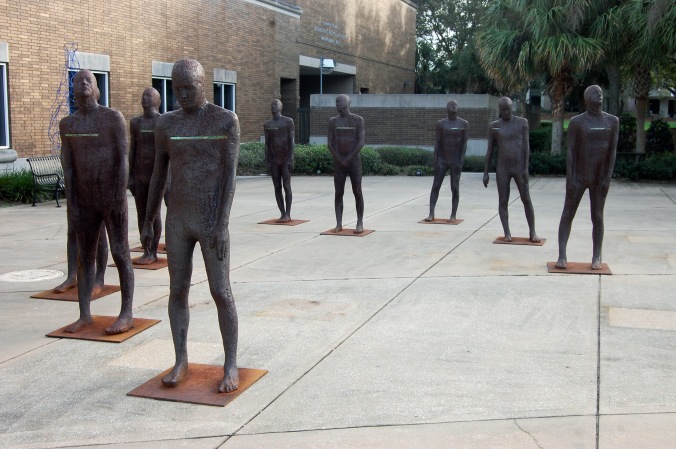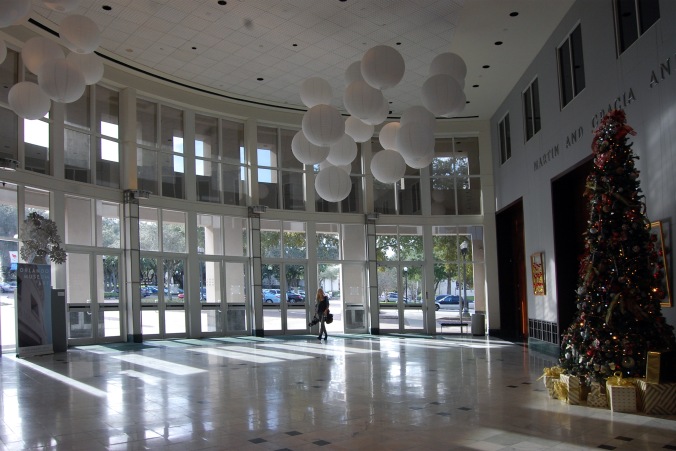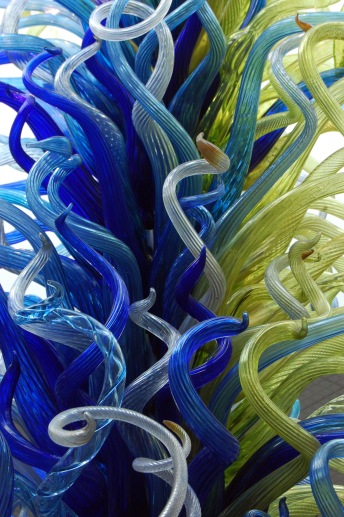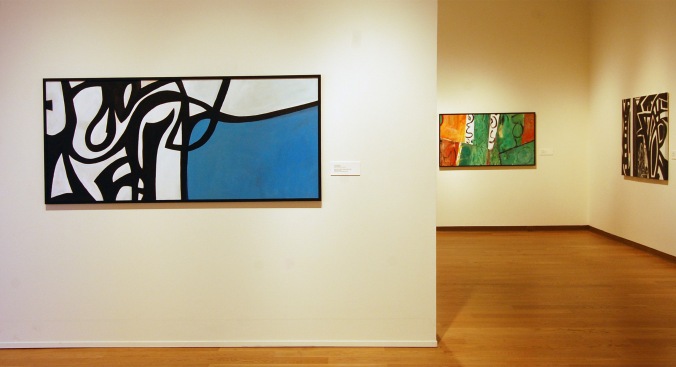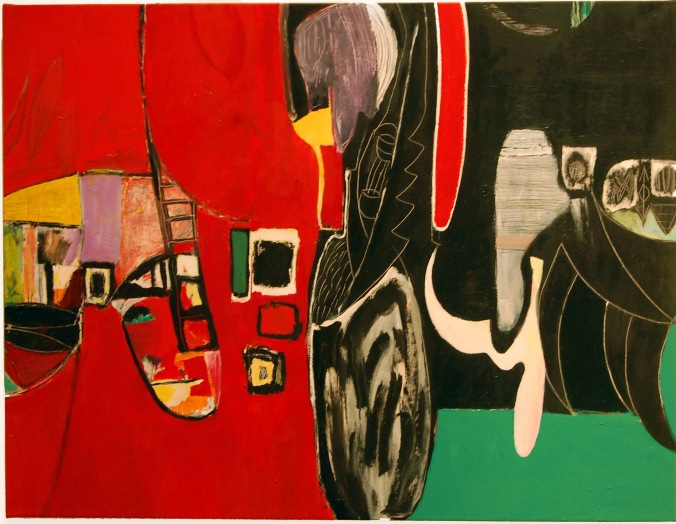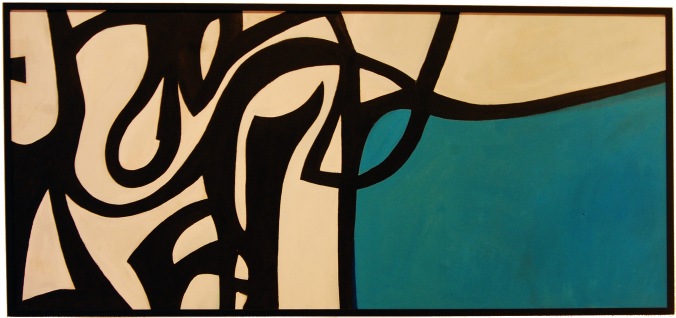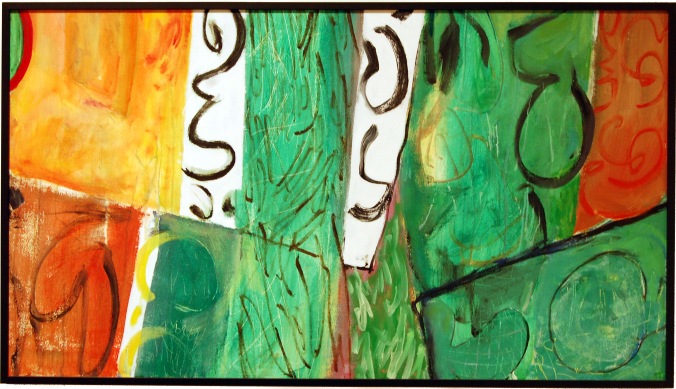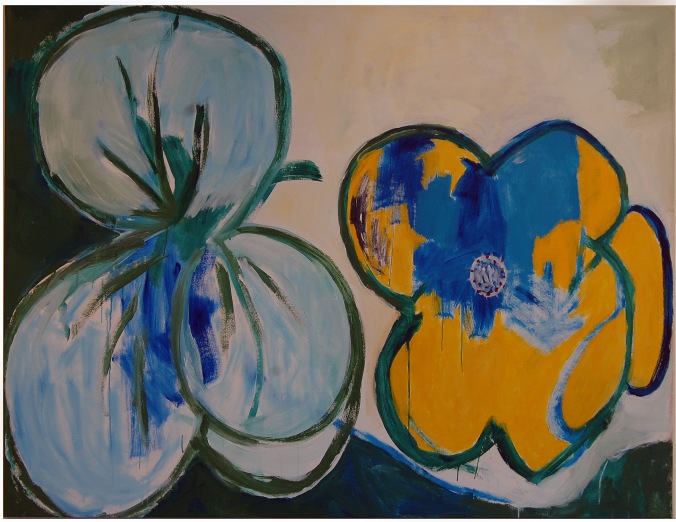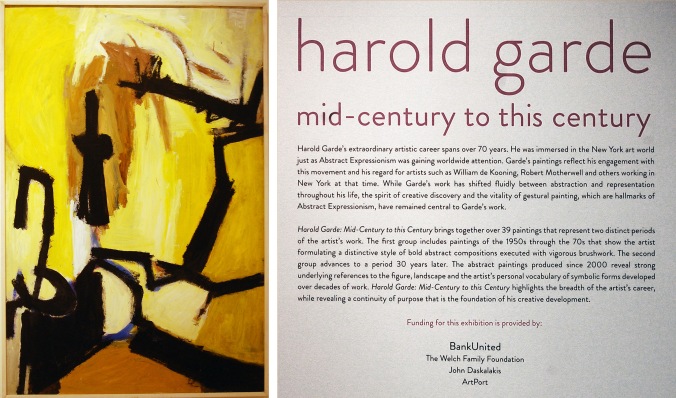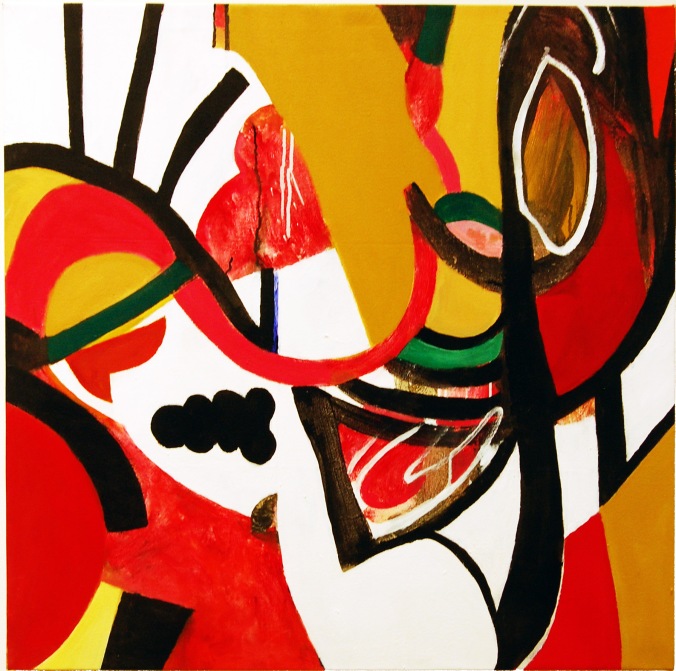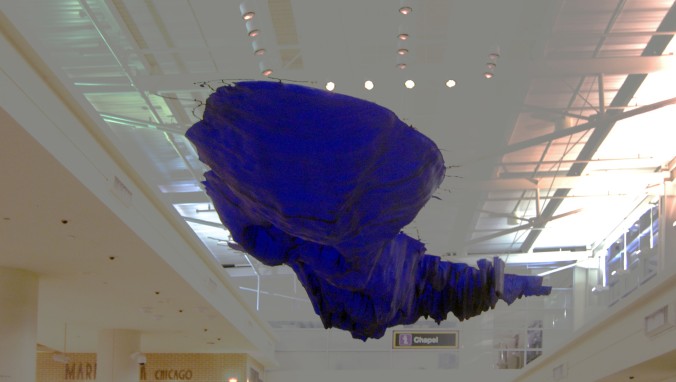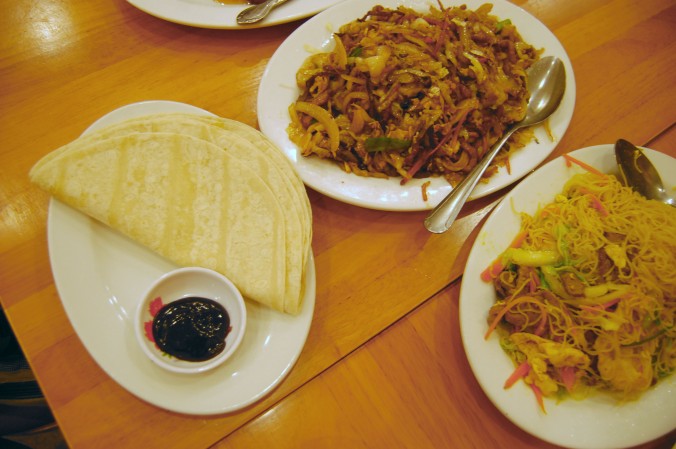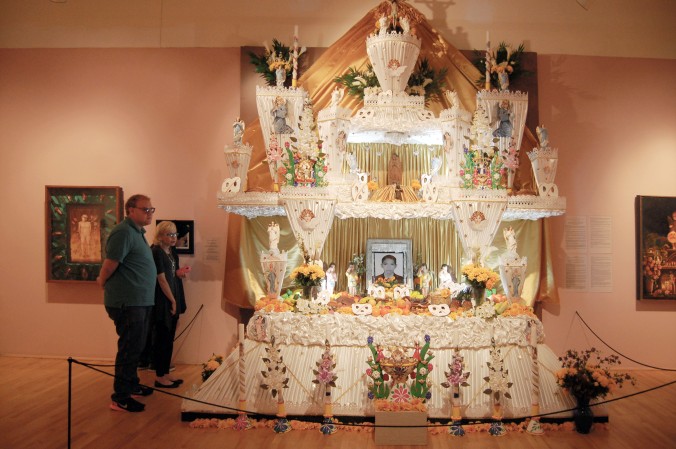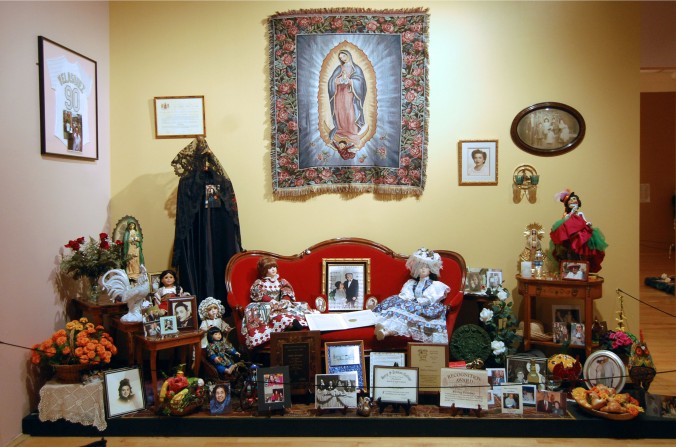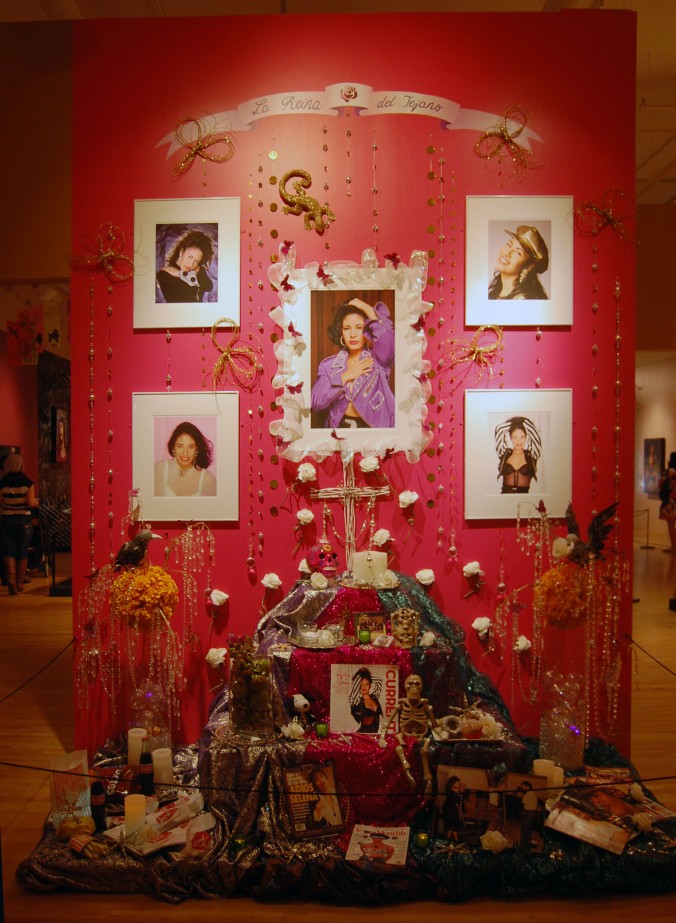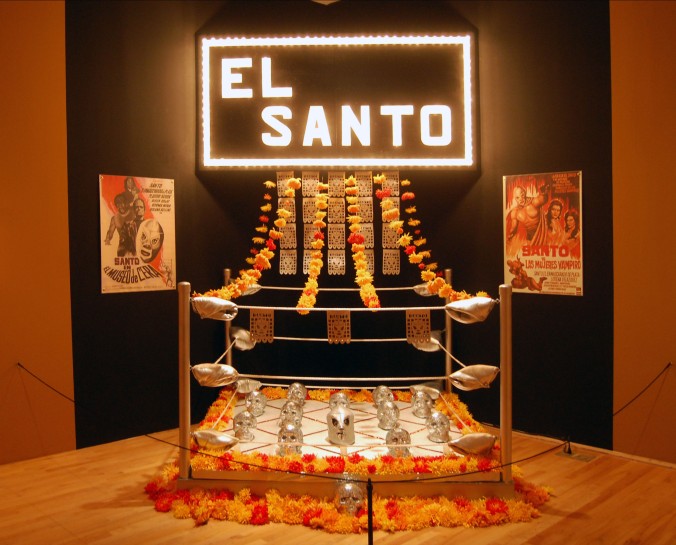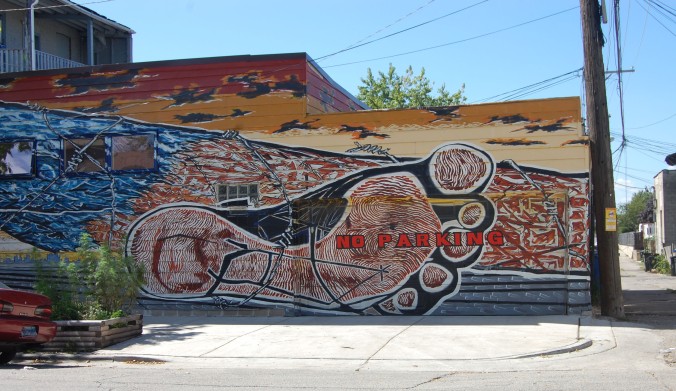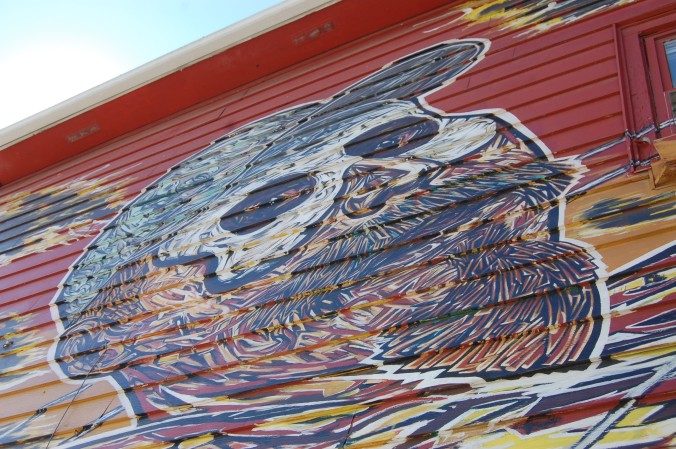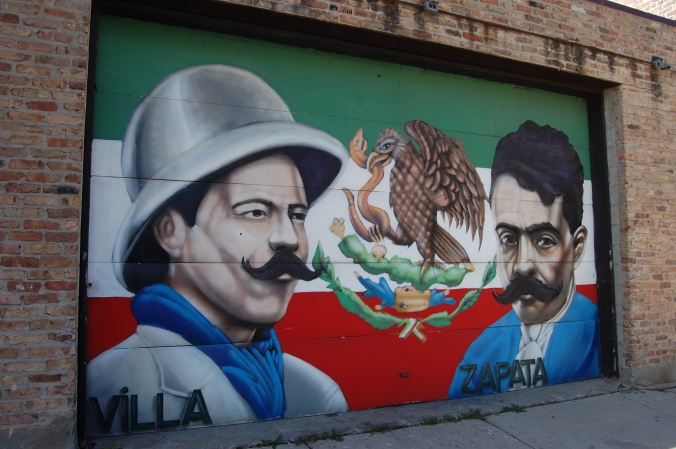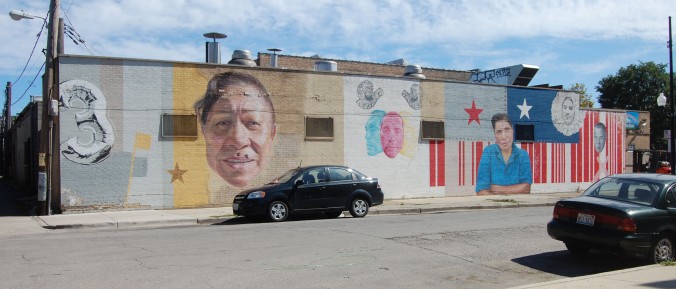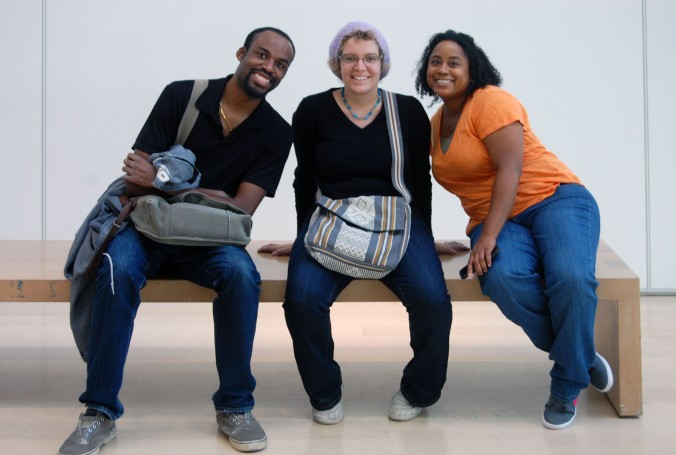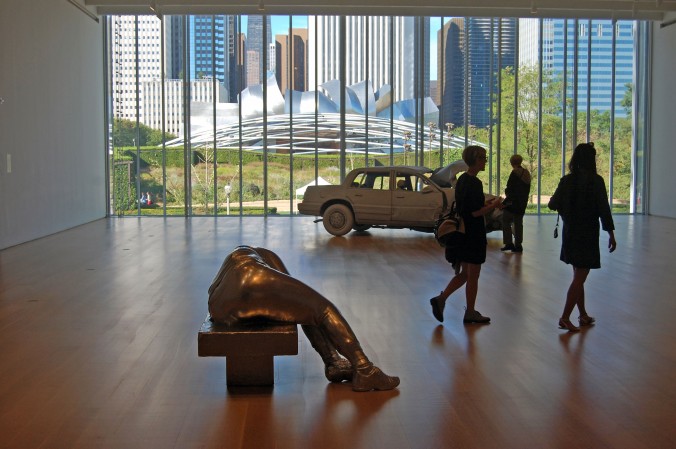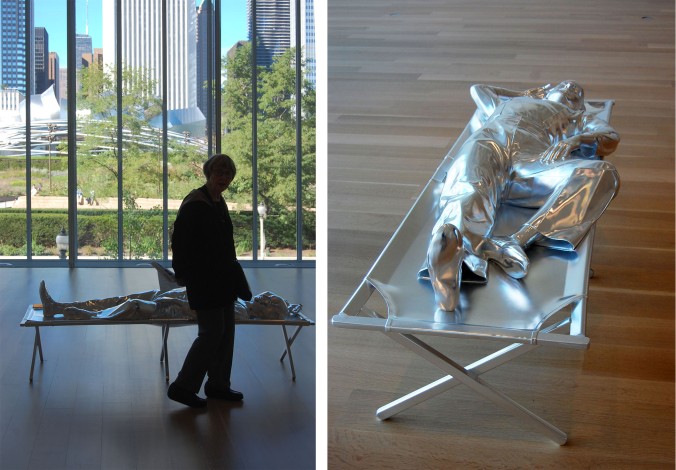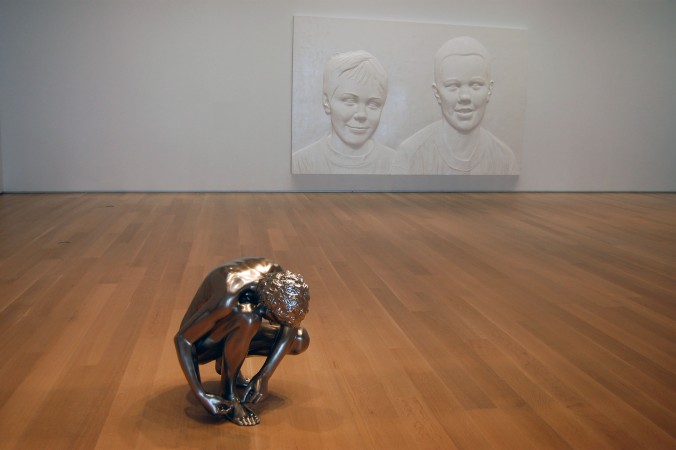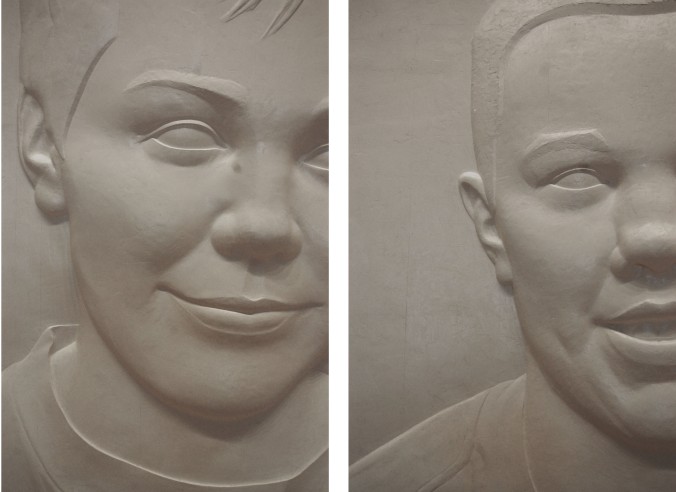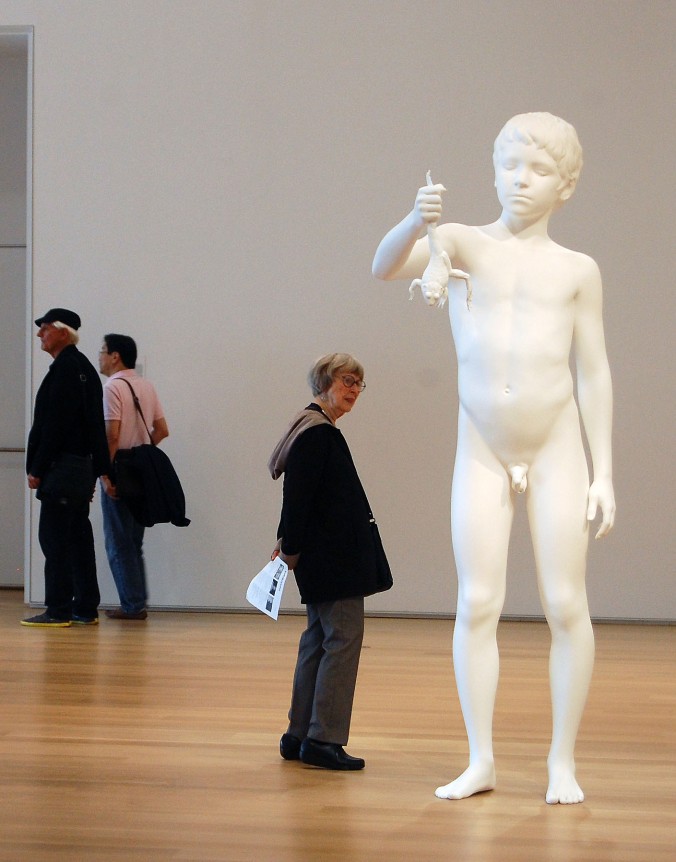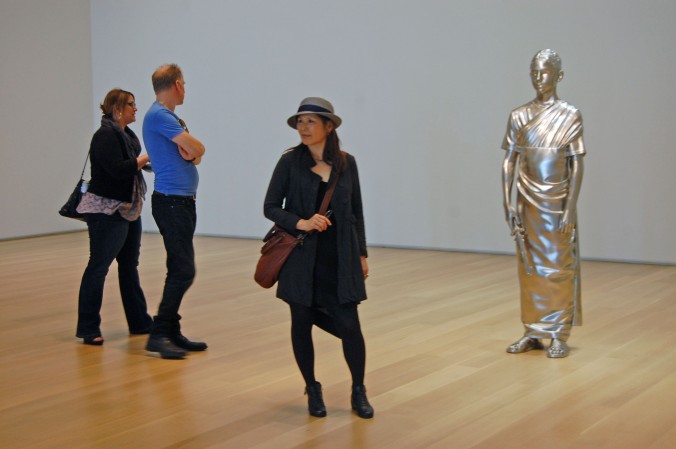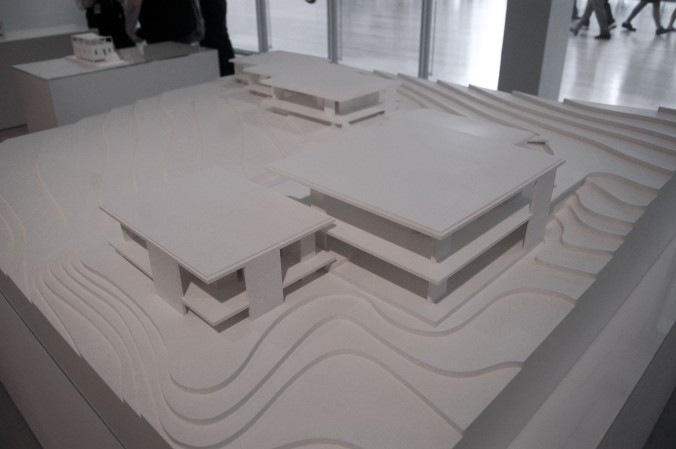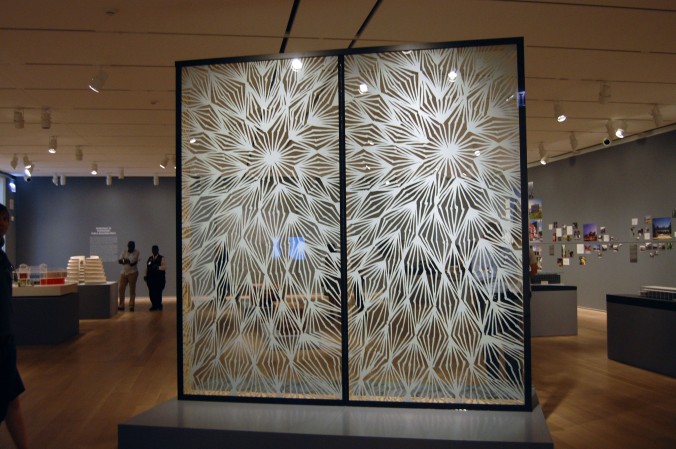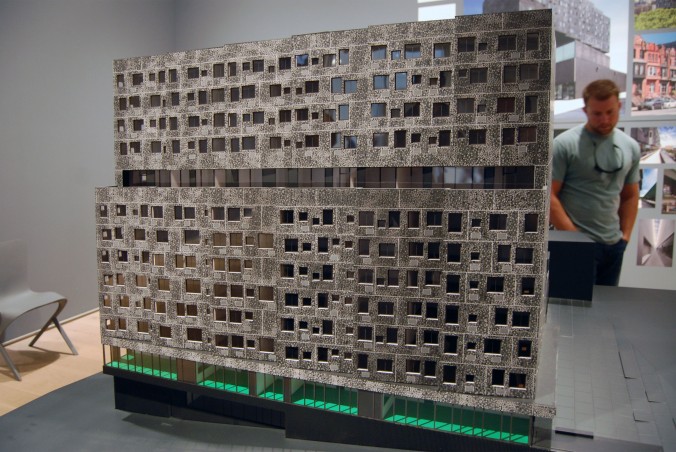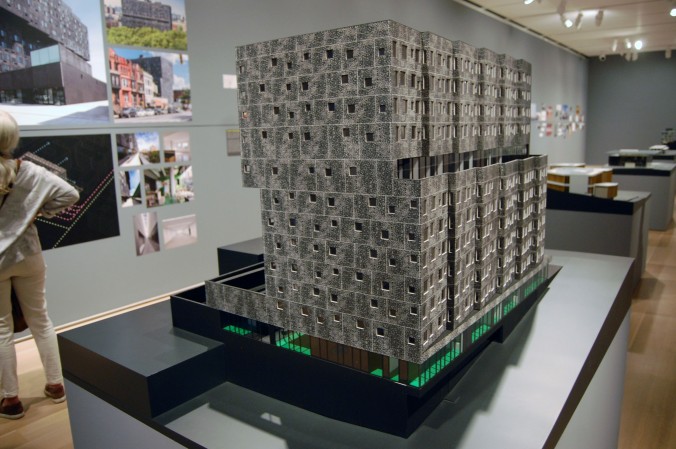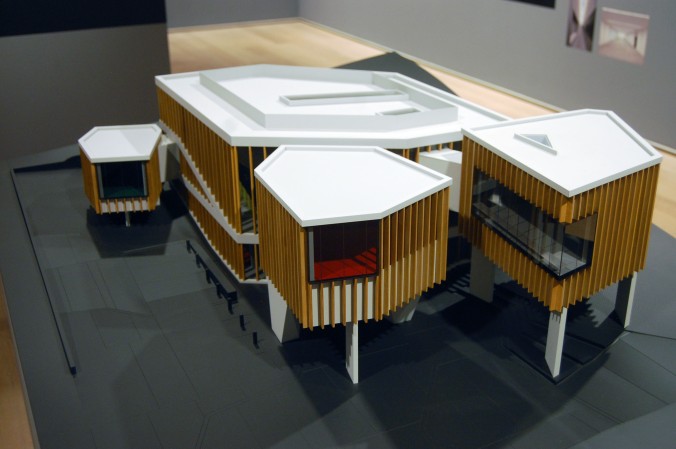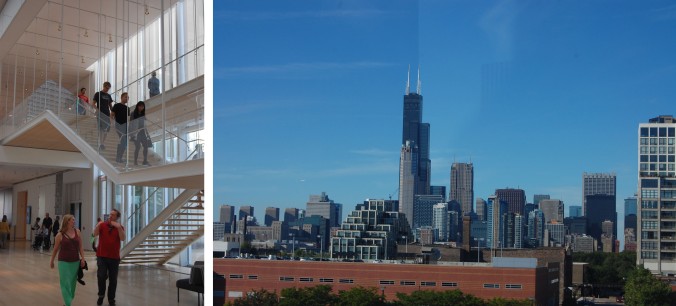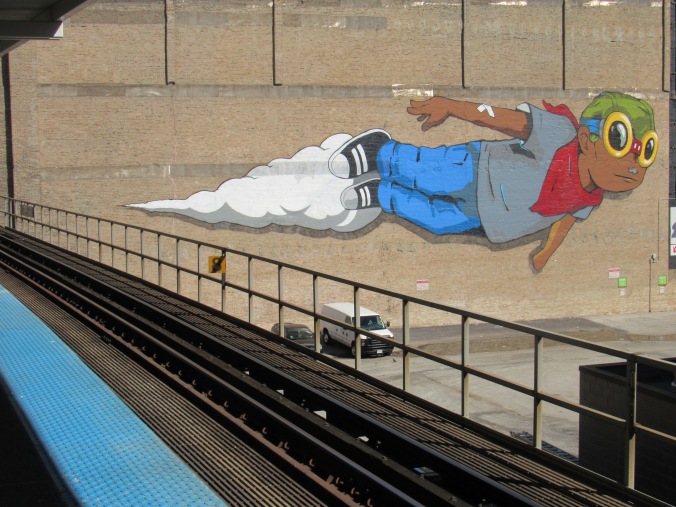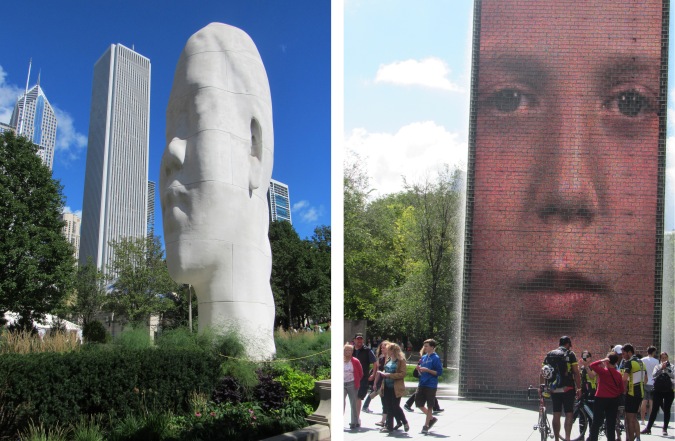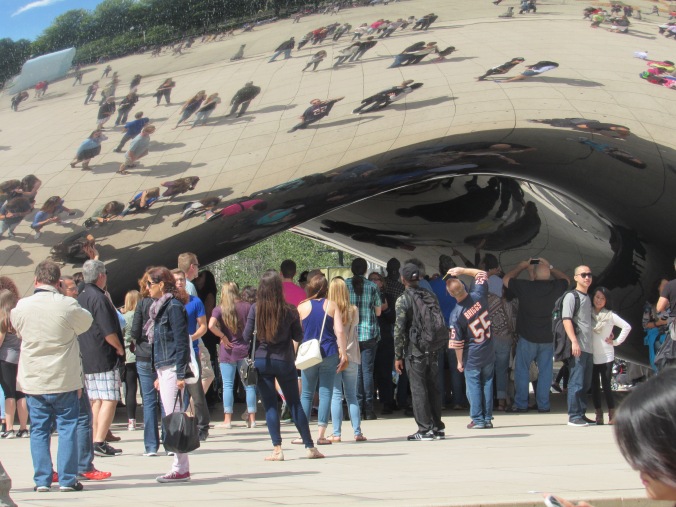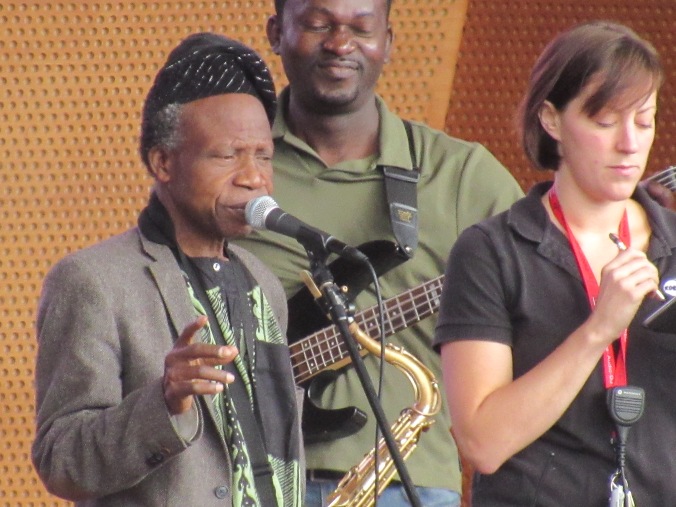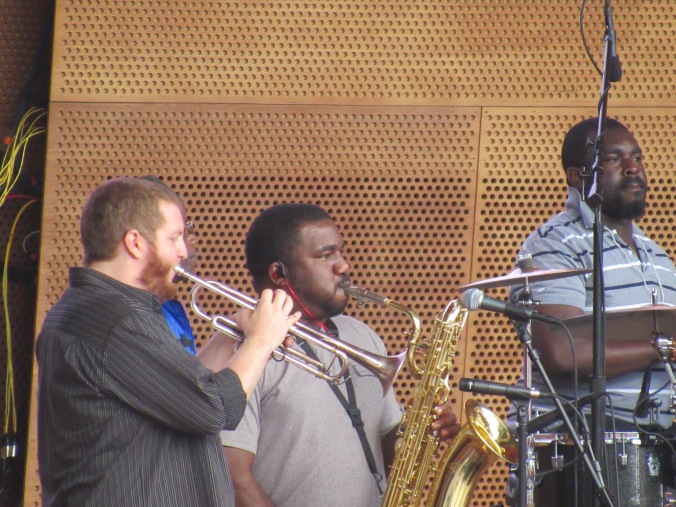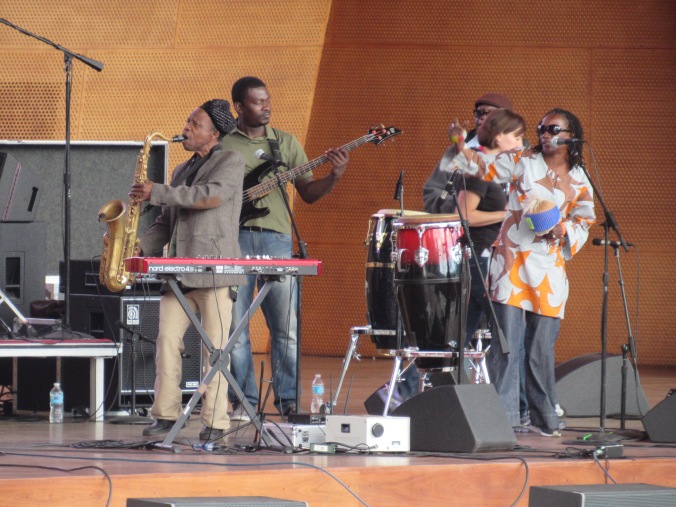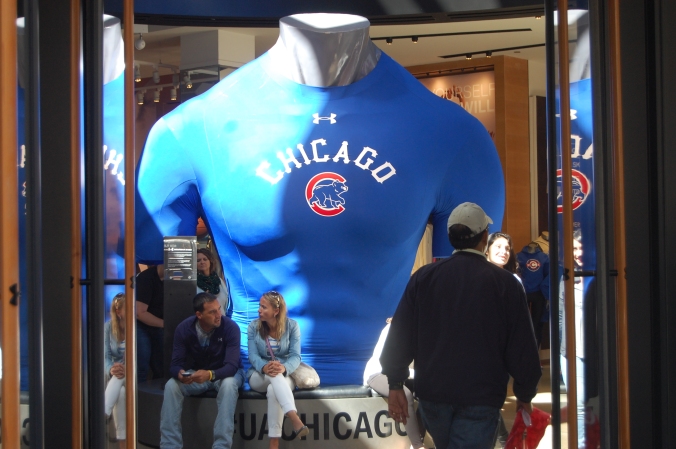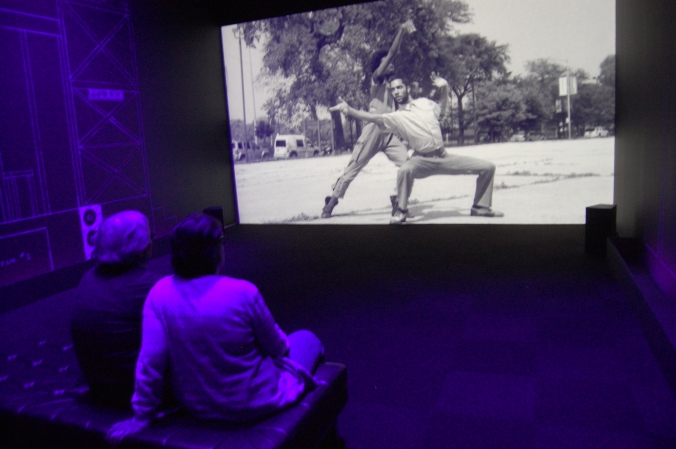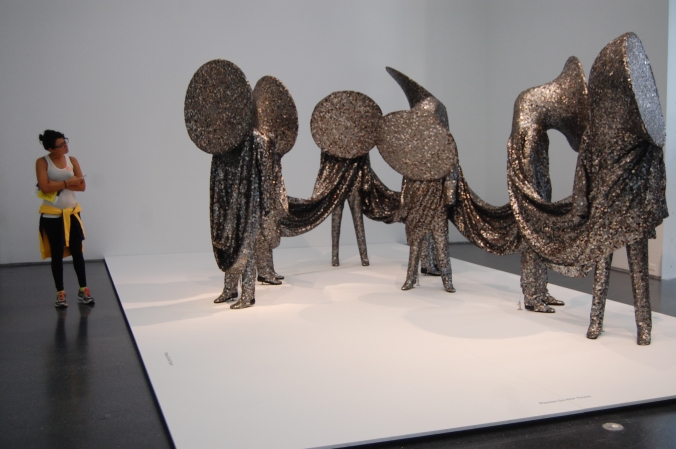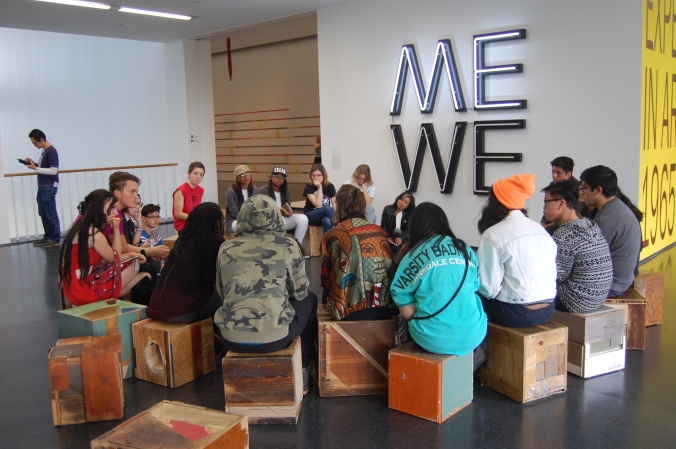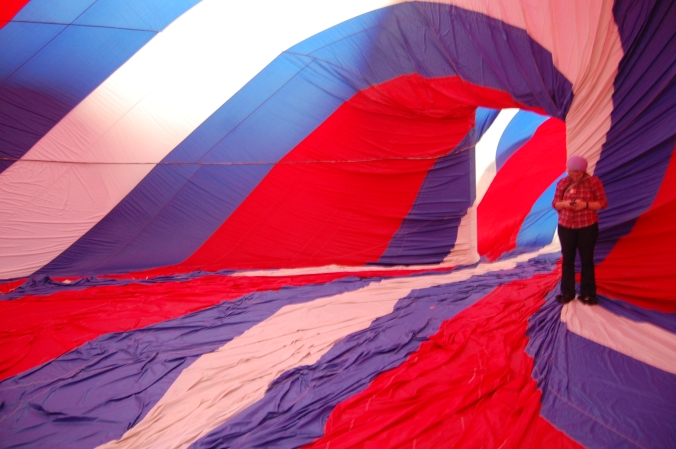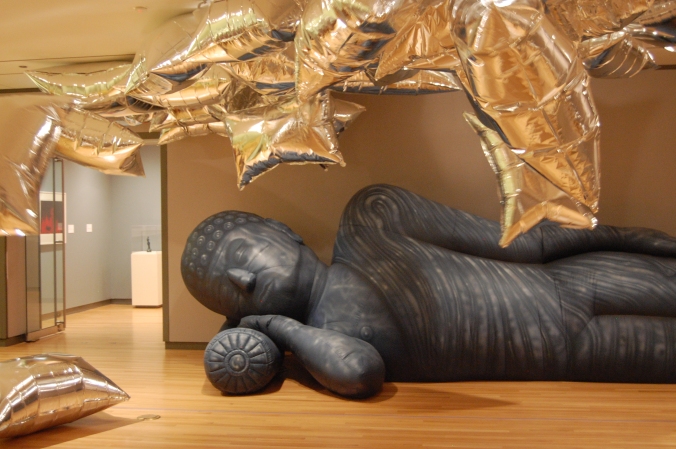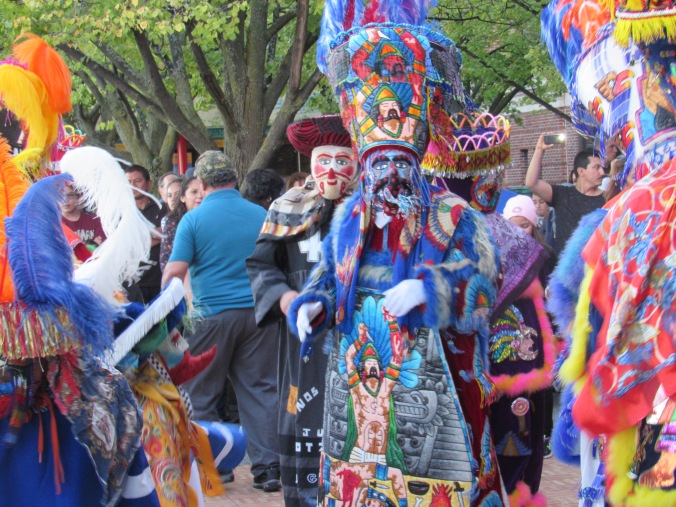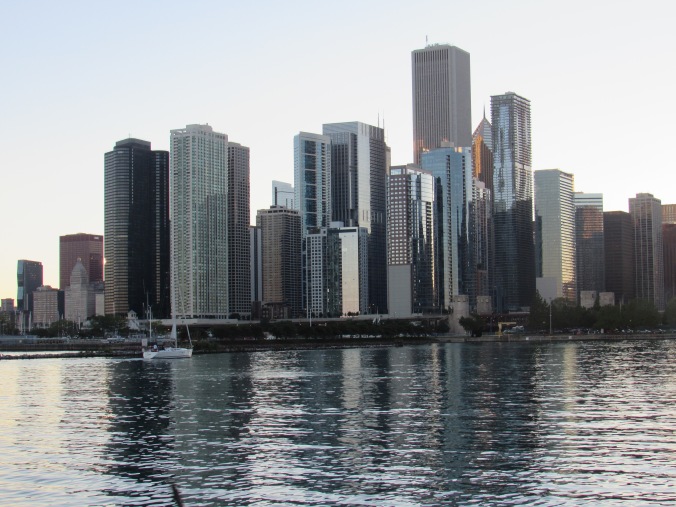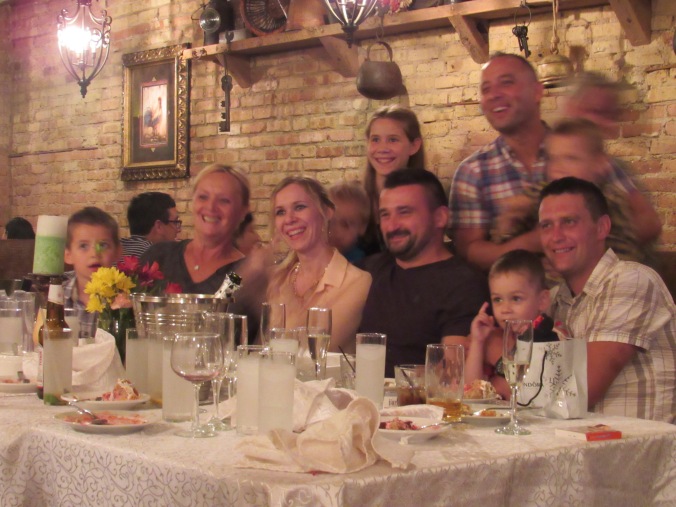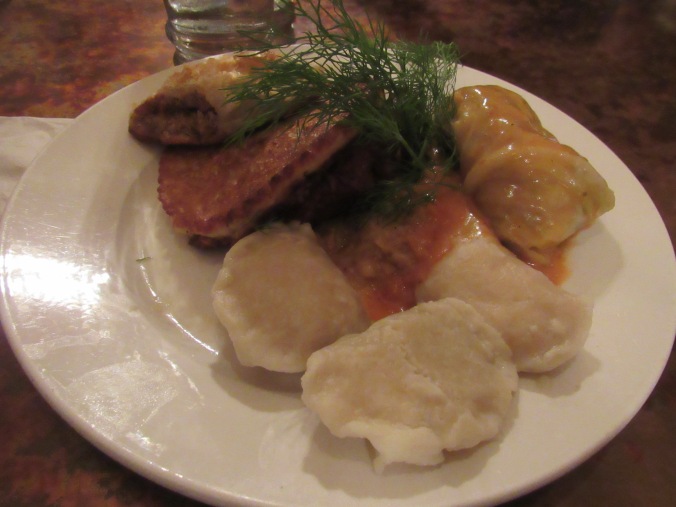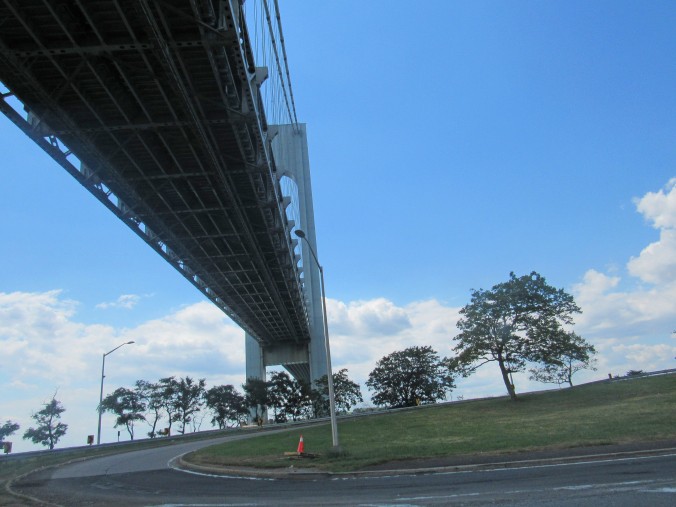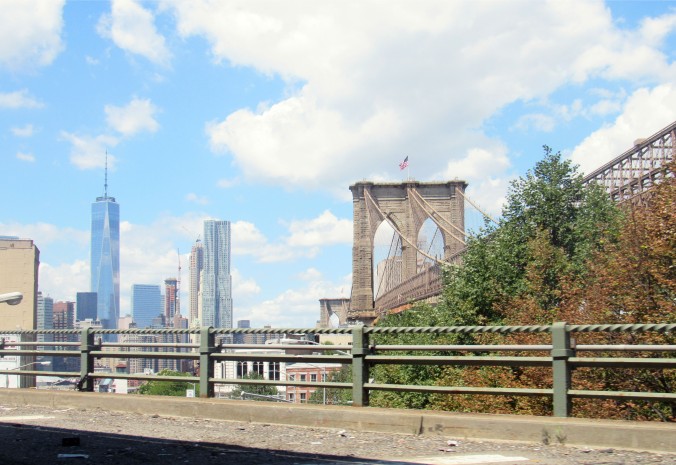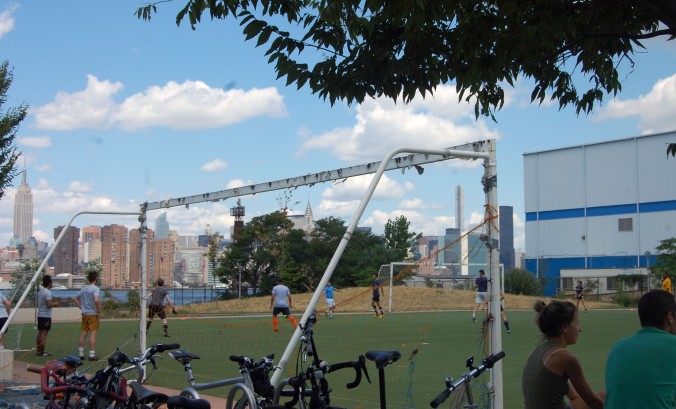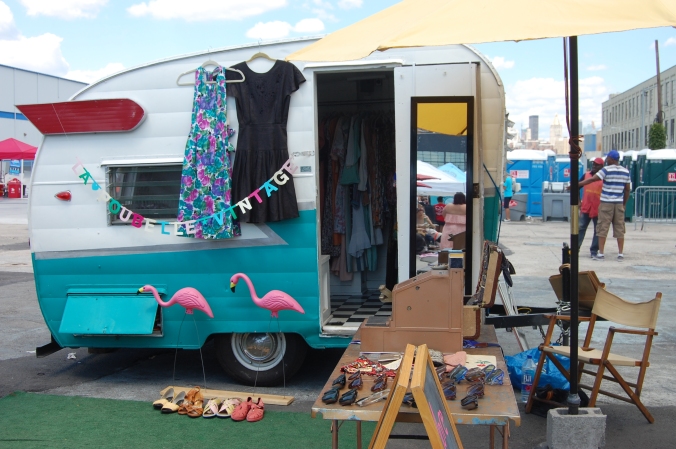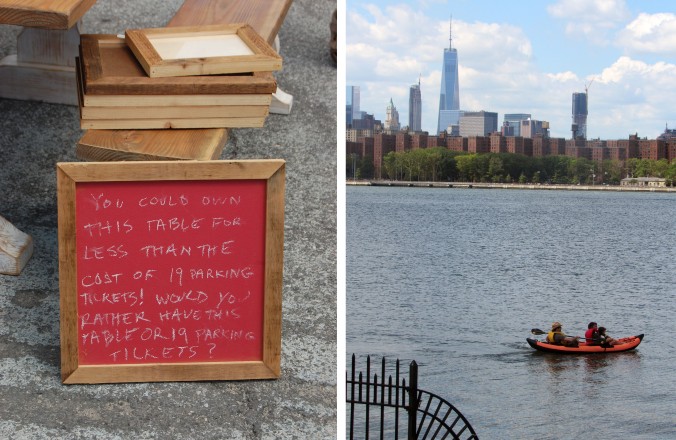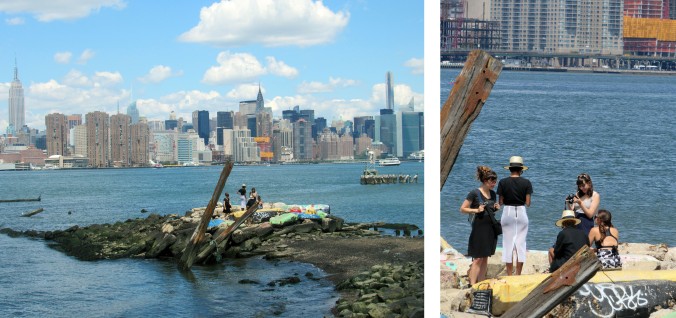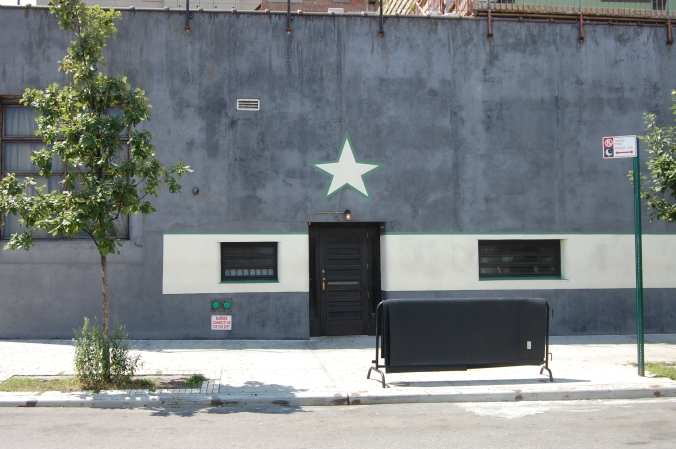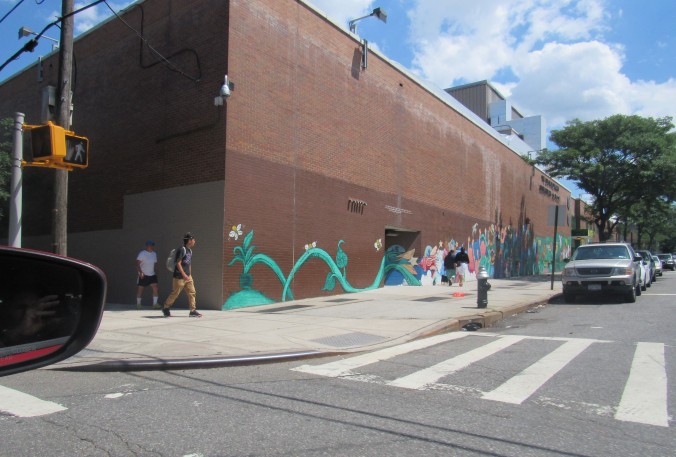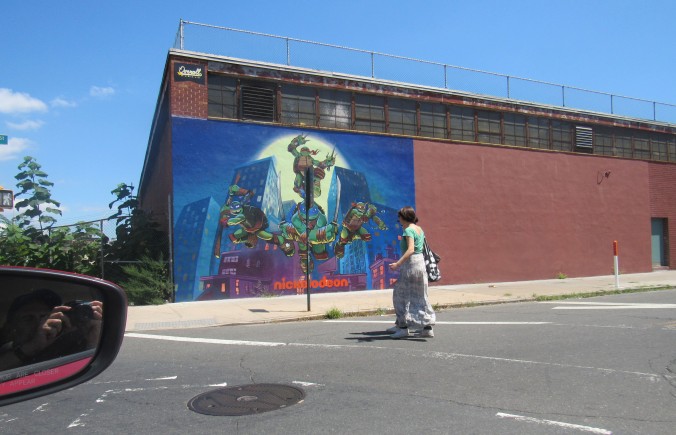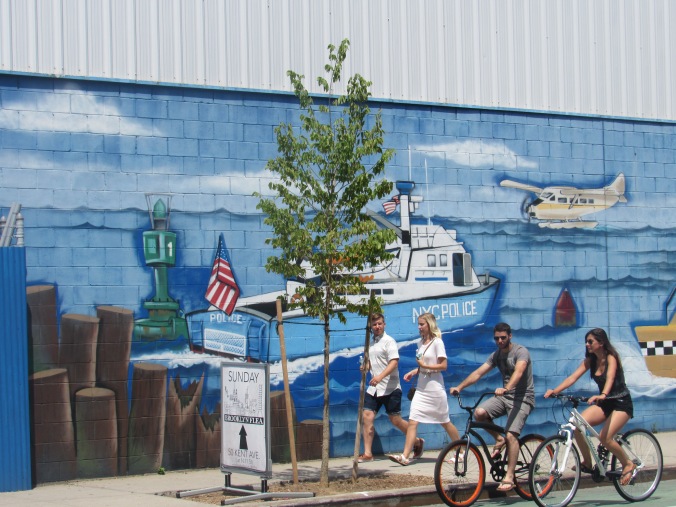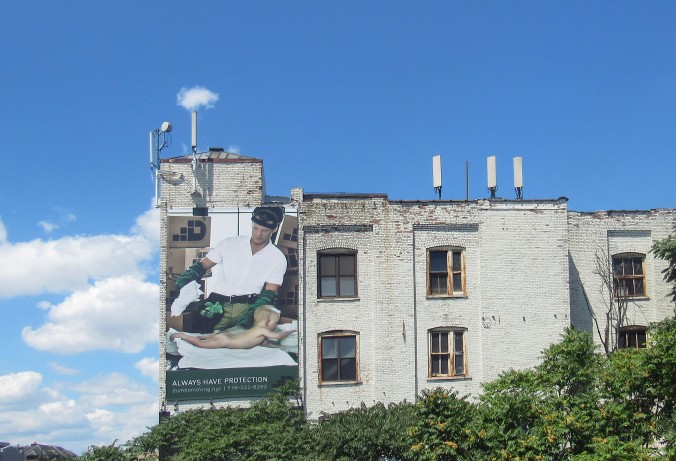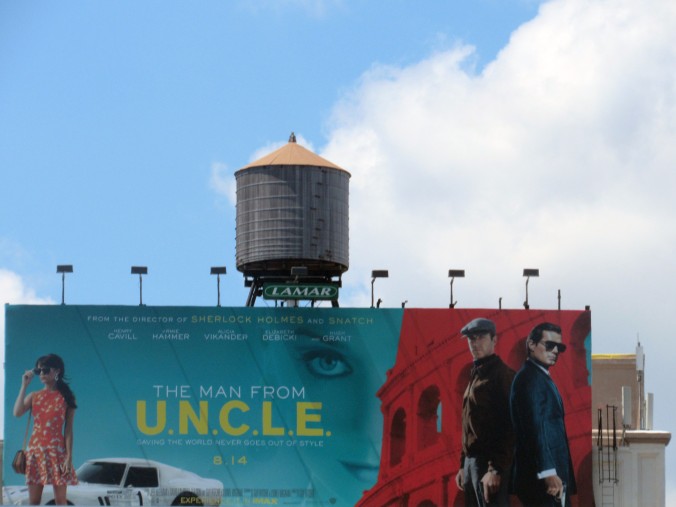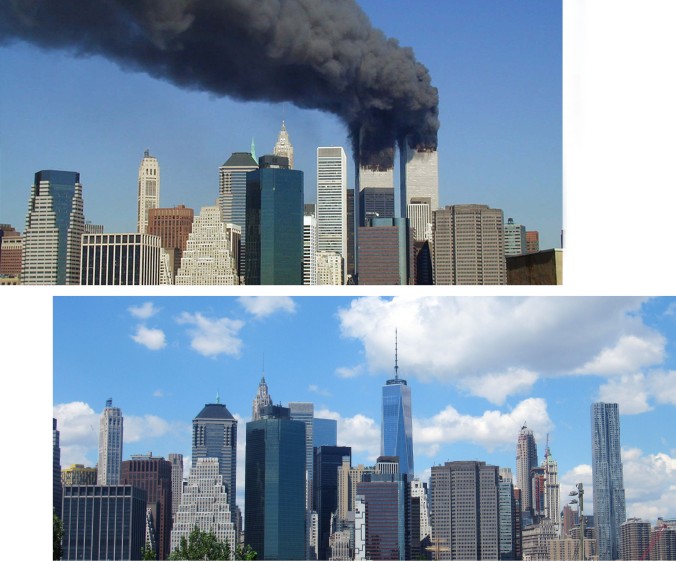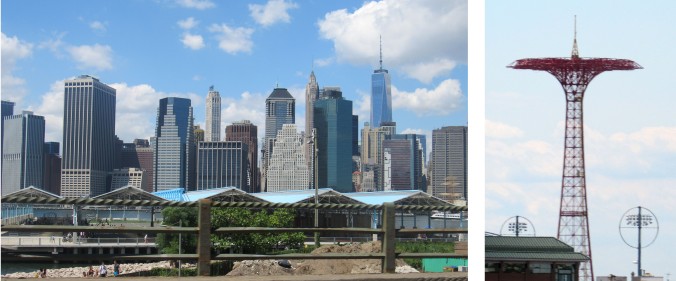 Held in the new East Wing revamp, they did the entrance right.
Held in the new East Wing revamp, they did the entrance right.
Wow. On the last day of the show, July 9, I was lucky enough to be in DC. I was lucky enough to read about it. And I was lucky enough to see it. This was a great show, about one of the early Impressionists who did not live long enough to see just where the movement was going.
 Frédéric Bazille Reclining Nude, 1864
Frédéric Bazille Reclining Nude, 1864
Who was Frédéric Bazille? He was one of the original founders of the Impressionist movement, the others being Claude Monet, Auguste Renoir, Camille Pissaro, Edgar Degas, Alfred Sisley and Berthe Morisot. These young painters had formed ties through studios and contact with Manet. Morisot, the female in the group, was more sheltered, as studio painting for a woman was not yet “acceptable.”
A fresh look at a more spectral palate, more realistic subject matter and a concentration of creating imagery using the nature of paint, rather than duplicating drawing in color was an impetus for this group. They traded pencils in for brushes. Degas and Cassatt even go back to the old tradition of pastel. They are the children of Delacroix, Corot, Courbet, as well as Turner and Constable. Because of them, we admire the work of Boudin, Jongkind and Diaz. Without them there is less appreciation of Whistler and Sargeant, and there is no Matisse.
 9 rue de la Condamine done in 1870
9 rue de la Condamine done in 1870
 “I am having fun so far painting the interior of my studio with my friends. Manet did me himself.”
“I am having fun so far painting the interior of my studio with my friends. Manet did me himself.”
 Bazille’s Self-Portrait with Palette, 1865 and Self-Portrait with a Detachable Color, 1865-67.
Bazille’s Self-Portrait with Palette, 1865 and Self-Portrait with a Detachable Color, 1865-67.
 A rare portrait by Claude Monet Portrait of Bazille at the Farm of Saint-Siméon and a photo of the artist.
A rare portrait by Claude Monet Portrait of Bazille at the Farm of Saint-Siméon and a photo of the artist.
Cailleboite and Sisley lived long enough to see their place in the sun. Sisley, for example, is always considered first rate, but never strays far from the original tenets. The beauty of his work lies in those wonderful snow scenes where his lightness of touch of color sets him slightly apart. Renoir and Monet moved toward their own direction, the former a portrait painter, the later a landscapist. Degas is always Degas, with or without Impressionism. He is the draughtsman of a century, where there was no such shortage of great draughtsmen. Morisot continued to paint her paintings in that wonderful style she had developed as a young woman. Pisarro, the oldest, but youngest at heart, reinvented himself constantly. Later members like Cezanne and late joiners Cassatt, Gauguin and Seurat, were already in another direction.
 One of his best to me, has always been Portraits de famille (Family Reunion)
One of his best to me, has always been Portraits de famille (Family Reunion)
Not everyone fits into that Impressionistic mold. Degas did not, but his use of pastels blurred that a little, but like Bazille, his painting is harder edged and in the early canvasses the paint thinner and brushwork less textural. Caillebotte in paintings such as Rue de Paris; temps de pluie (Paris Street; Rainy Day) has that similarity in paint. The difference is Bazille is really a master at light which shapes his form, he and Monet really do have that in common. Even in his later works shown, the brushwork is subdued, but the light still plays an important part in shaping the painting
 Femmes au jardin [Women in the Garden] is one of my favorite Monet’s. Madame Monet painted four times. Look what he does with the light with each of the dresses, now look at Bazille’s painting above. Lucky for us, it appeared at the show.
Femmes au jardin [Women in the Garden] is one of my favorite Monet’s. Madame Monet painted four times. Look what he does with the light with each of the dresses, now look at Bazille’s painting above. Lucky for us, it appeared at the show.
Monet in ’66 and Bazille in ’67 both owe that sense of detail to fabric to the tradition of Ingres, one of the best textural artists of the French school extending back as far as the paintings of Clouet. Texture is a hard, and sometimes tedious thing to visually create, it may involve pattern, and a specific use of value. Bazille’s sensibility to light and texture is different than Monet. Most of the Impressionists eventually abandoned use of texture. I can only think of Caillebotte as the one that kept some semblance of it. Cezanne for example created monumental form from color, but abandoned texture altogether.
 Frédéric Bazille’s View of the Town, the model I read was actually his sister.
Frédéric Bazille’s View of the Town, the model I read was actually his sister.
 Frédéric Bazille’s La Toilette
Frédéric Bazille’s La Toilette
La Toilette is quite a sensational painting, the three figures compressed in a square format, the beautiful flesh tones of the women, the use of pattern and texture, and the rich palette make it a real looker. The young woman to the right could have stepped out of a later Renoir, right down to the dress, when he went for less fuzzy brushwork. The work also has elements of Delacroix. The knee and foot of the center figure are a little awkward, but the idea of pushing out the woman on the left and pushing back the center figure whose torso is lying on the bed is done well. He gives it a few dark highlights on the edges of the torso to hold it together. The rich color and pattern of the background and the beautiful use of paint for the fuzzy stripes on the woman in the left in the foreground is a beautiful device. The painting depends on color, even though drawing with a brush is obvious. It is well composed, and put together. I had never seen even copies of this one.
 Frédéric Bazille’s Summer Scene (Bathers)
Frédéric Bazille’s Summer Scene (Bathers)
Each painter sees light in a different way, and so for Bazille when compared to Monet. To me, Monet saw shadows as patterns from light. The Reunion piece shows a painter who sees things under a distinct canopy and light dapples in. If you have ever shot a camera under these conditions, you see light differently, the patterns are less distinct and those spots of light that seep in form abstractions, next to the regularity the forms under the light-blocked canopy form. Even his outdoor male bathers, seem to be the product of outdoor light like 1884-7 bathing beauties of Renoir.
How many of us when young have either drawn or photographed ourselves nude, and then later sat embarrassed with the results? I have gotten the feeling that Bazille may have done the same with this painting. While his dreamy eyed bather in the above painting, seems a bit cliche for a young Frenchman, this one seems you painted yourself, your brother or a friend mooning someone and then felt a little ridiculous after. Think about it when you compare it to something like L’Âge d’airain (The Age of Bronze) by Rodin.
Frédéric Bazille’s Le Pêcheur à l’épervier (The Fisherman with a Net)
 Frédéric Bazille’s Young Woman with Peonies (Le musée Fabre)
Frédéric Bazille’s Young Woman with Peonies (Le musée Fabre)
 Frédéric Bazille’s Young Woman with Peonies (National Gallery DC), 1870
Frédéric Bazille’s Young Woman with Peonies (National Gallery DC), 1870
The above paintings were a joy to see together. I have loved forever this painting from the collection of the National Gallery, and it has sat for years without context. I have always believed it was a response to Degas’ 1865 A Woman Seated beside a Vase of Flowers (Madame Paul Valpinçon).
 Frédéric Bazille’s The Western Ramparts at Auiges-Mortes. 1867
Frédéric Bazille’s The Western Ramparts at Auiges-Mortes. 1867
 Pierre Auguste Renoir’s Frédéric Bazille, 1867 and Frédéric Bazille’s Pierre Auguste Renor, 1868-69.
Pierre Auguste Renoir’s Frédéric Bazille, 1867 and Frédéric Bazille’s Pierre Auguste Renor, 1868-69.
In 1870, Bazille became a victim of warfare, during the Franco-Prussian War. He died at 28, these amazing paintings were all that was left of him for us. It was said that Renoir was embittered upon news of his death, and that had he tried to talk his friend out of joining the army to begin with. Several of his paintings were secured by his father, which is why they are in the museum at Montpelier. The portrait by Renoir (above) was then owned by Manet, and his father made a trade of another for the portrait of his son. Some say he was forgotten altogether when Impressionism gained steam.
Life is a series of accidents, many more pleasant than not. The visiting of this show reminded me of a young art student hitching to Boston and someone telling him about a Cezanne show at BFA. He made it to a great show, full of wonderful paintings. His old counterpart, decades later, fell into a similar accident. Several years ago, when in Paris, I was at the Musée d’Orsay, some of these paintings were not on display due to a show they were getting ready for Manet. It was wonderful both to see and be able to photograph, what was not allowed the day I was there. Thanks curators of the National Gallery DC, you put a great show together.



















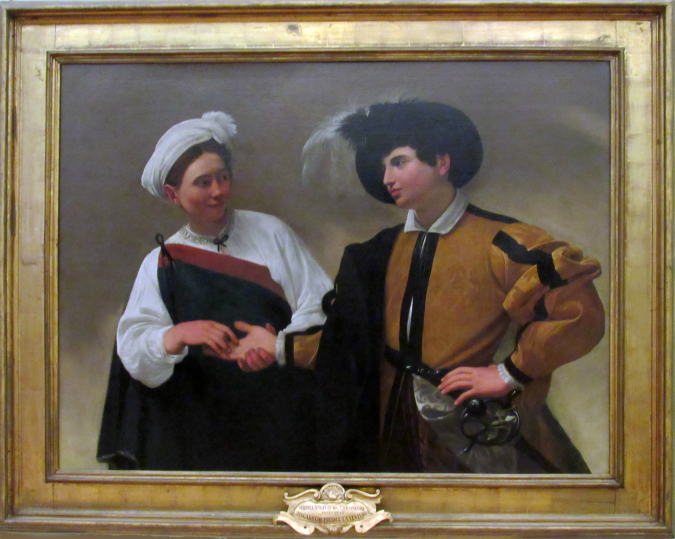 The Fortune Teller, an early work of the master in the Capitoline collection
The Fortune Teller, an early work of the master in the Capitoline collection










